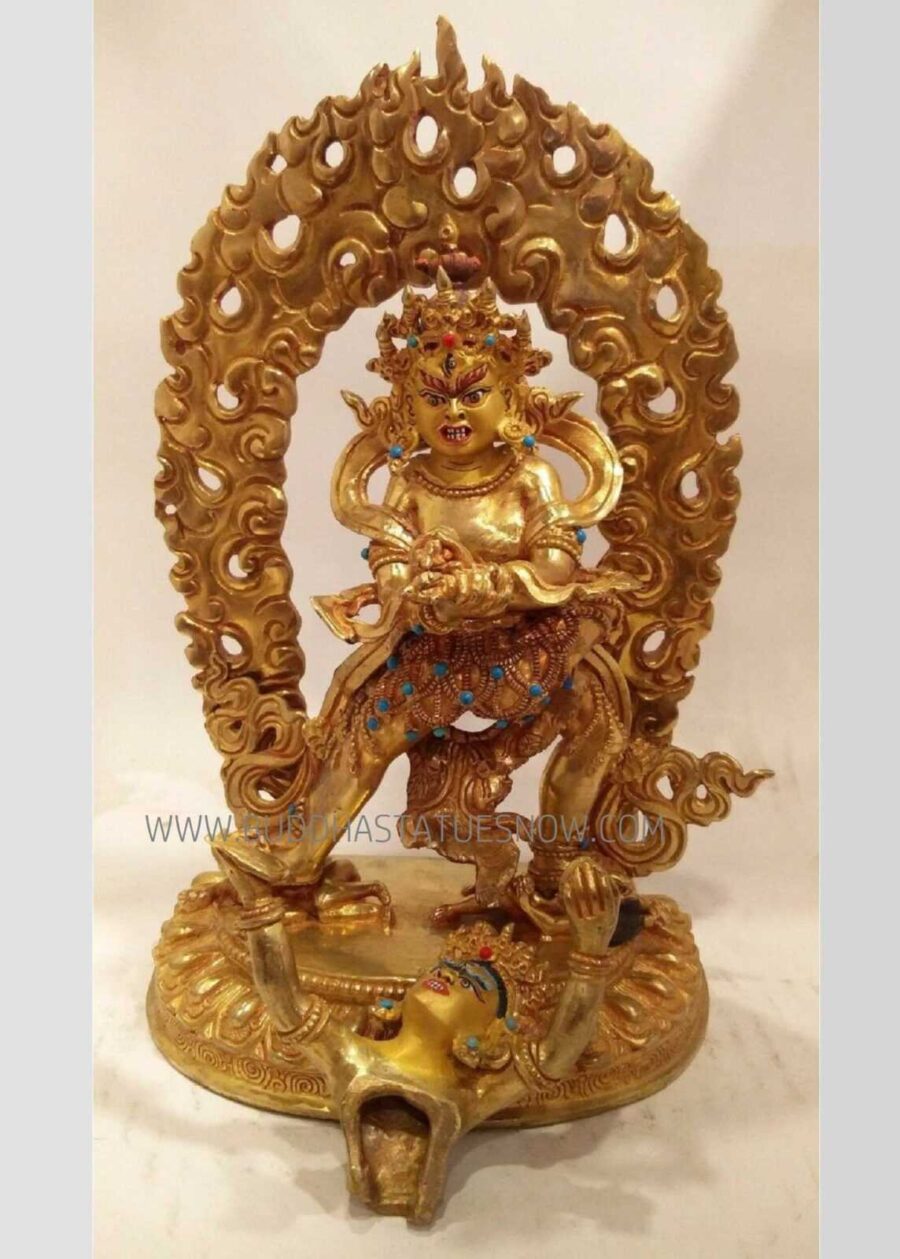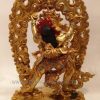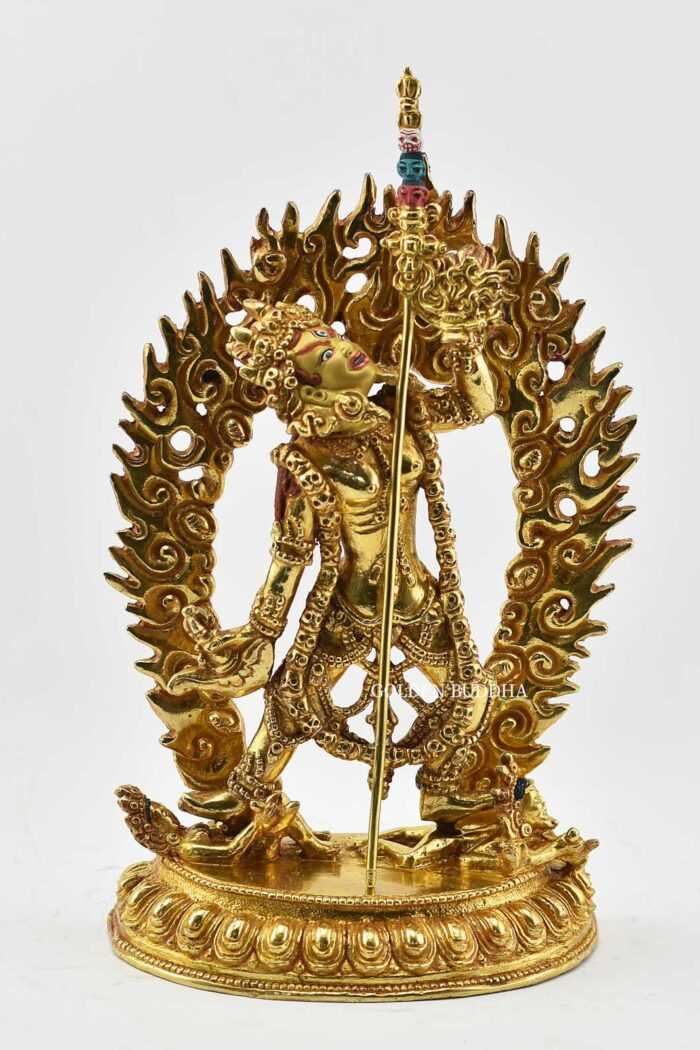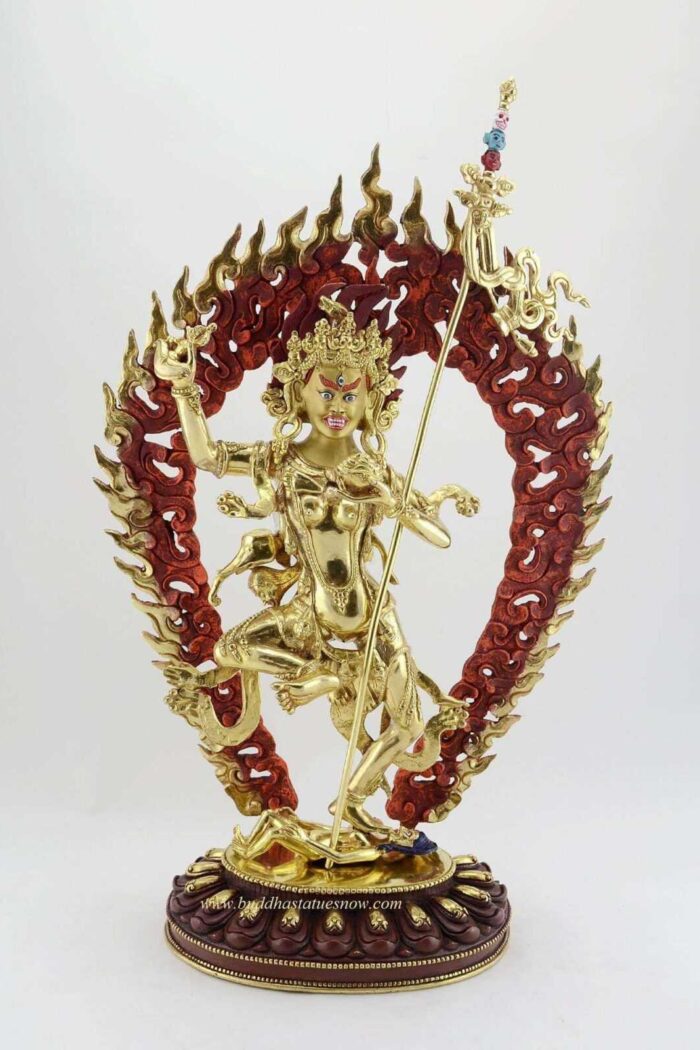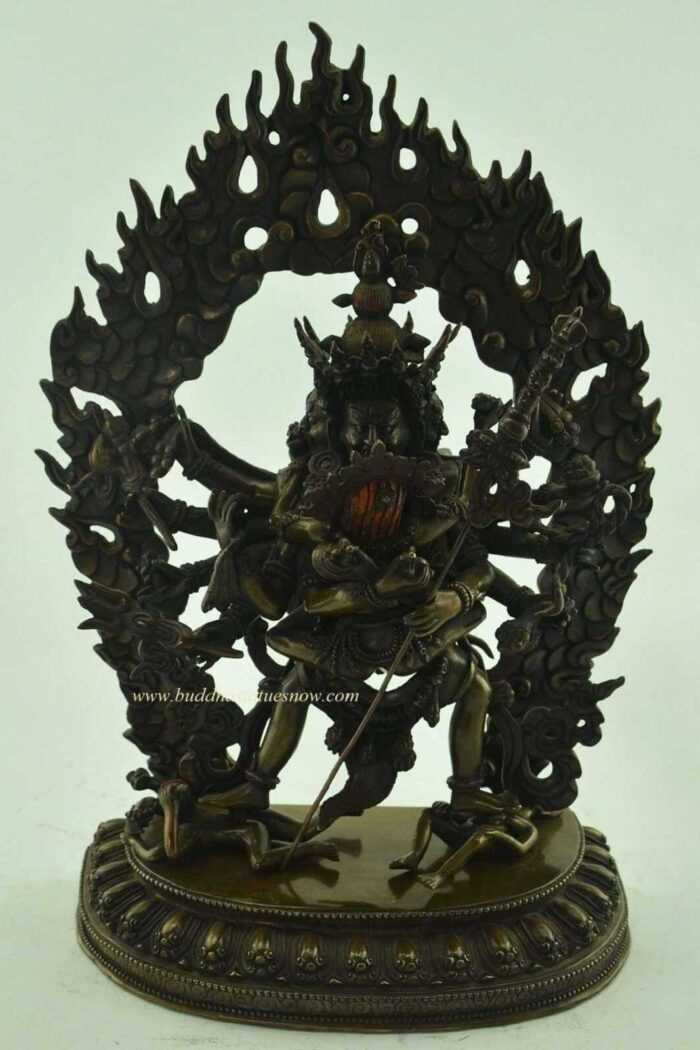Our two armed Chakrasamvara statue holds his consort Vajravarahi in tight embrace. As a result, behind his consort we can see he holds the vajra in the right hand and the ghanta (bell) in the left. Also, these classic Buddhist symbols depict the male attribute of compassion (vajra) and the female attribute of wisdom (ghanta). It is the joining of these two virtues in eternity which is enlightenment. Additionally, his consort Vajravarahi holds the flaying knife in her right hand and the kapala skull cup in her left.
In unison these deities are stepping on the goddess Kalarati and the god Bhairawa. She is the embodiment of Nirvana and he is the symbol of samsara. Their portrayal in this form expresses the transcendence of Chakrasamvara and his consort above them.
The tantra associated with our Chakrasamvara statue originated in the 8-9th century at the outset of Tibetan Buddhism. Additionally, its origins lie in Vajrayana Buddhism where it is in the mother class of the Anuttarayoga Tantra. Also known as the “Discourse of Sri Heruka and the Samvara Light”, it is the origin of Chakrasamvara’s other name – Heruka. The powerful Chakrasamvara tantra can induce mundane siddhis such as flight and also supramundane siddhis such as enlightenment.


